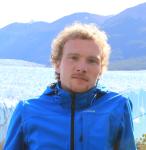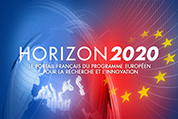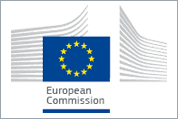ESR3.4: Daniel WehnerFrequency range of marine air gun arrays

My name is Daniel Wehner. I am born right in the heart of Germany, in Northeim which is close to the mountains of the Harz that are probably the first elevations if you are going from North to South. I am a person who likes to be outside, doing sports activities and explore the Earth and hence I opted for the study of geoscience. For my studies I moved to Kiel where I did my undergraduate studies and also my Master degree which was in the field of geophysics. The city Kiel has less mountains but it is located right at the Baltic Sea. Therefore, I became more and more interested in marine geosciences and I attended some research cruises organized by the research centre GEOMAR. In my Master thesis I worked on a combined inversion of elastic waveforms and gravity and now I am doing my PhD at the NTNU in Trondheim that is, obviously, part of the WAVES project... and besides Norway definitely has a beautiful landscape.
Main host institution:
Supervisor:
Boerge Arntsen (borge.arntsen @ ntnu.no)
Secondment institution:
Objectives:
Full-waveform methods take into account the entire frequency spectrum of seismic or acoustic signals, and have thus triggered new research to enhance the low-frequency output from seismic sources. The ESR will apply this idea to man-made sources. In particular, recent work by the co-investigator Landroe suggests that marine air gun arrays firing at some depth generate air bubbles, which in turn give rise to a low frequency signal associated with their own oscillations (0.1-0.2s period) and rise time (1-10s depending on source depth). Field experiments will be conducted to validate the theoretical results of Landroe and Amundsen [2014], and to determine whether the low-frequency waves so generated can be employed in seismic imaging.
Expected results:
- Acoustic measurements of buoys deployed at various water depths.
- Flow simulations of the velocity and pressure field surrounding a spherical bubble rising in water.
- Comparison with experimental results.
- A new method to identify natural thin pipes and old wells for which position data are lost.
further information:
Also in the section
Key Facts
- Coordinated by Université Pierre et Marie Curie
- 15 participating partners
- 6 European countries and the USA
- 15 trained fellows
- Project budget: 3 227 952.96€
- Project duration: 4 years
- WAVES is a European project funded by the European Union’s Horizon 2020 research and innovation programme under the Marie Slodowska-Curie grant agreement n° 641943.
Contact
Coordinator:
Lapo Boschi (lapo.boschi @ upmc.fr)
Project Manager
Fanny Schultz (fanny.schultz @ sorbonne-universite.fr)



